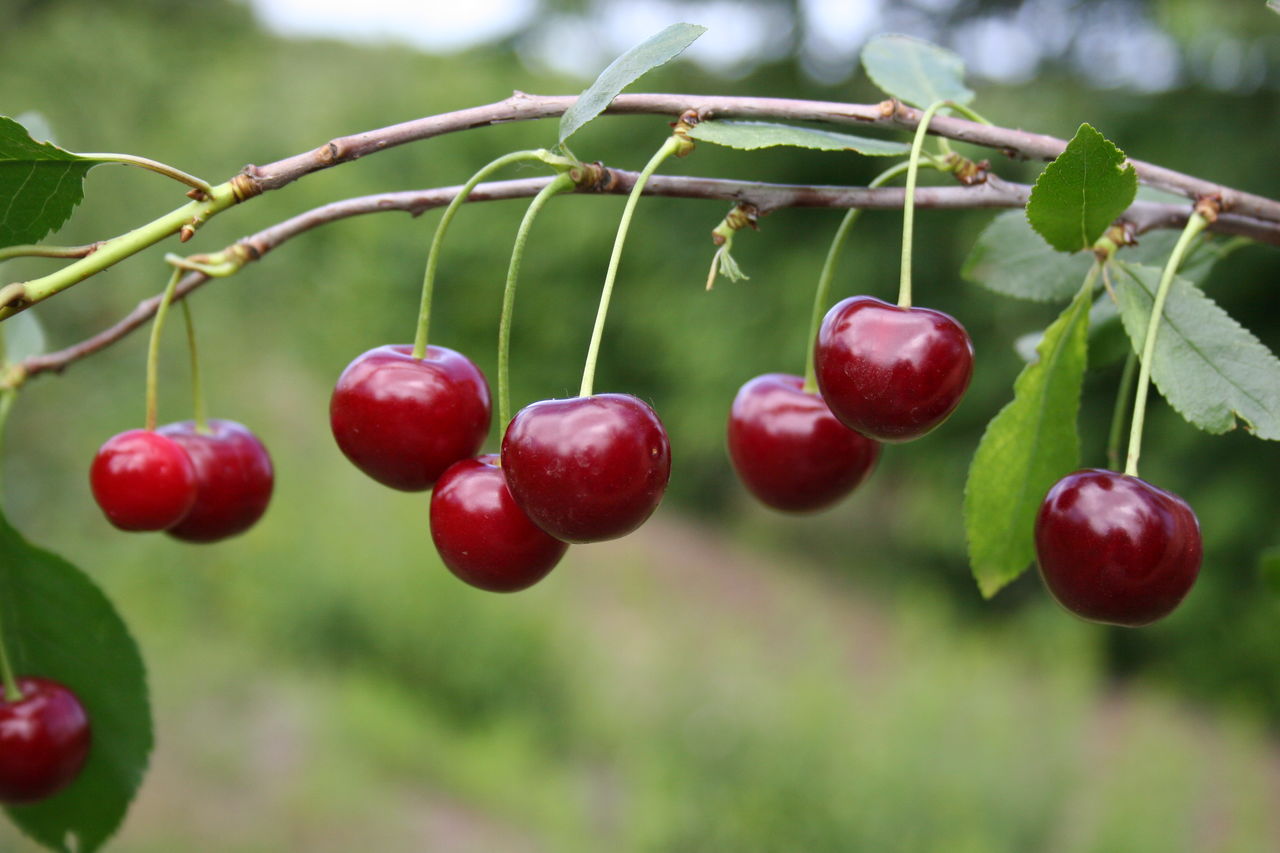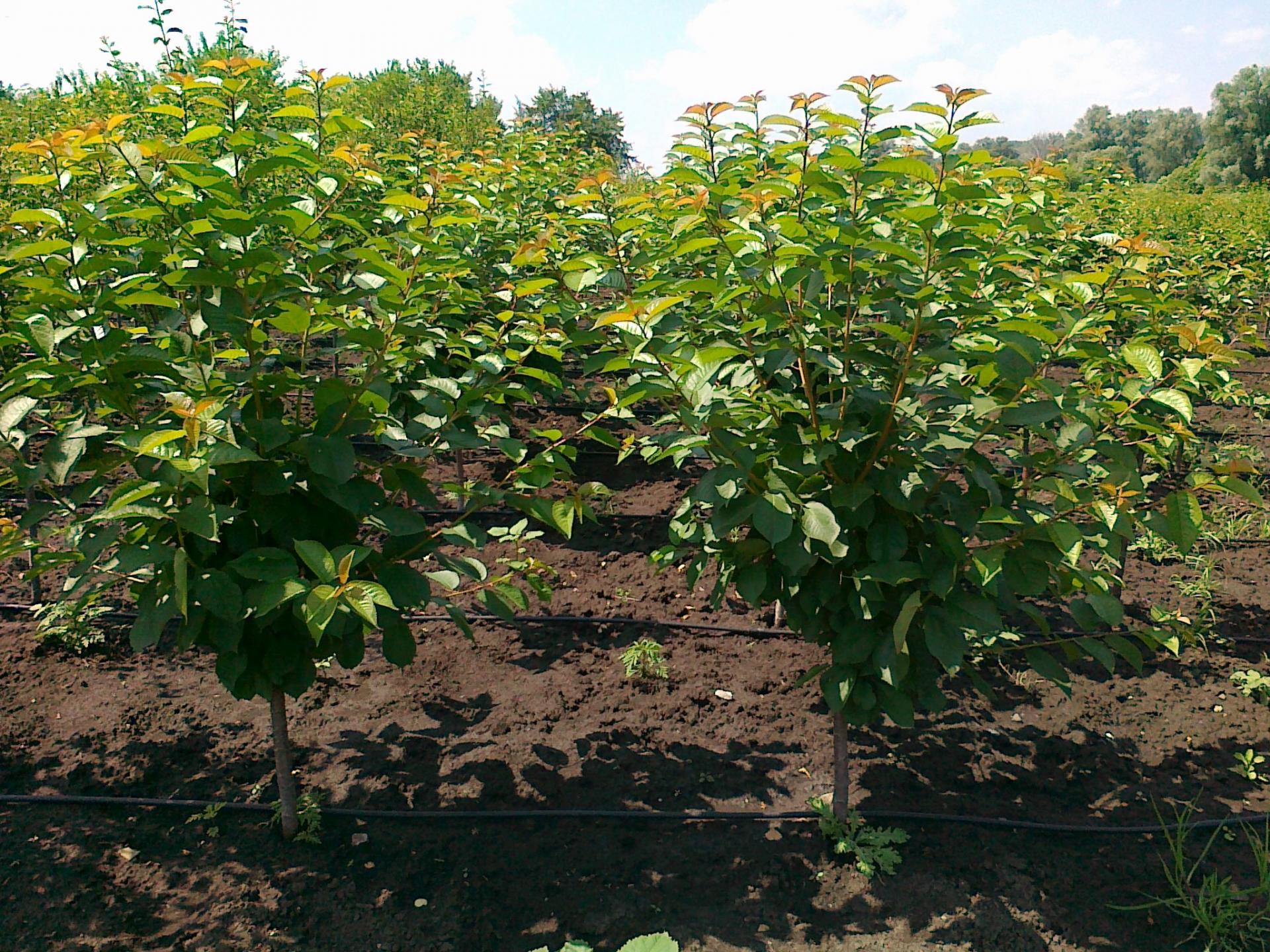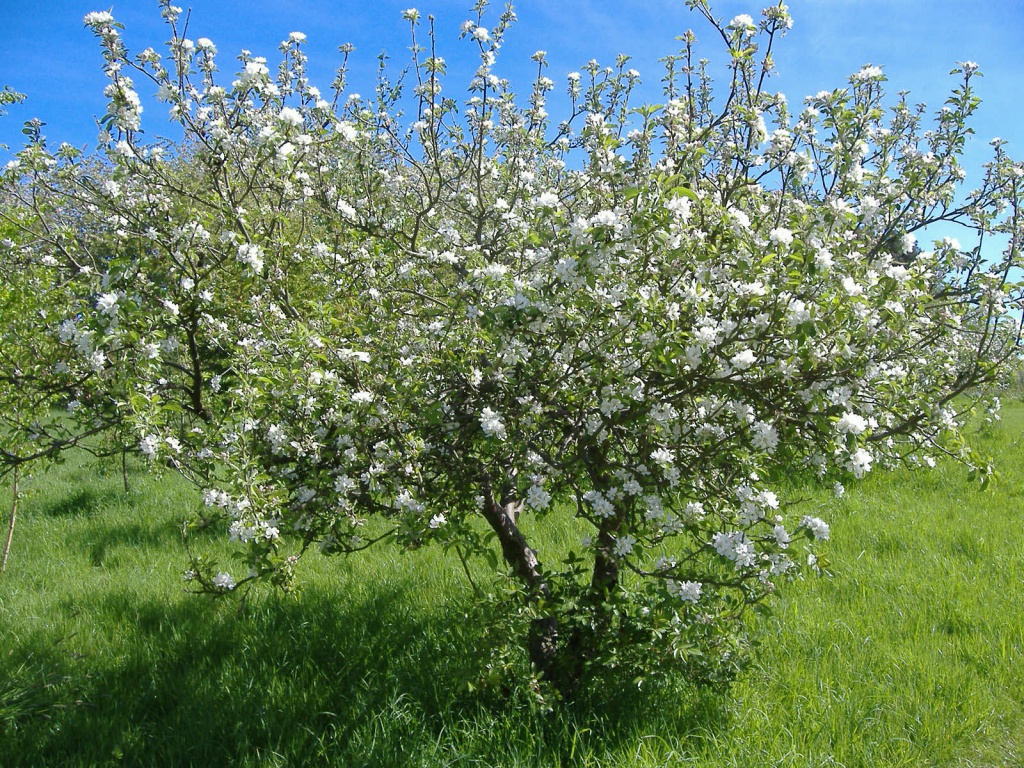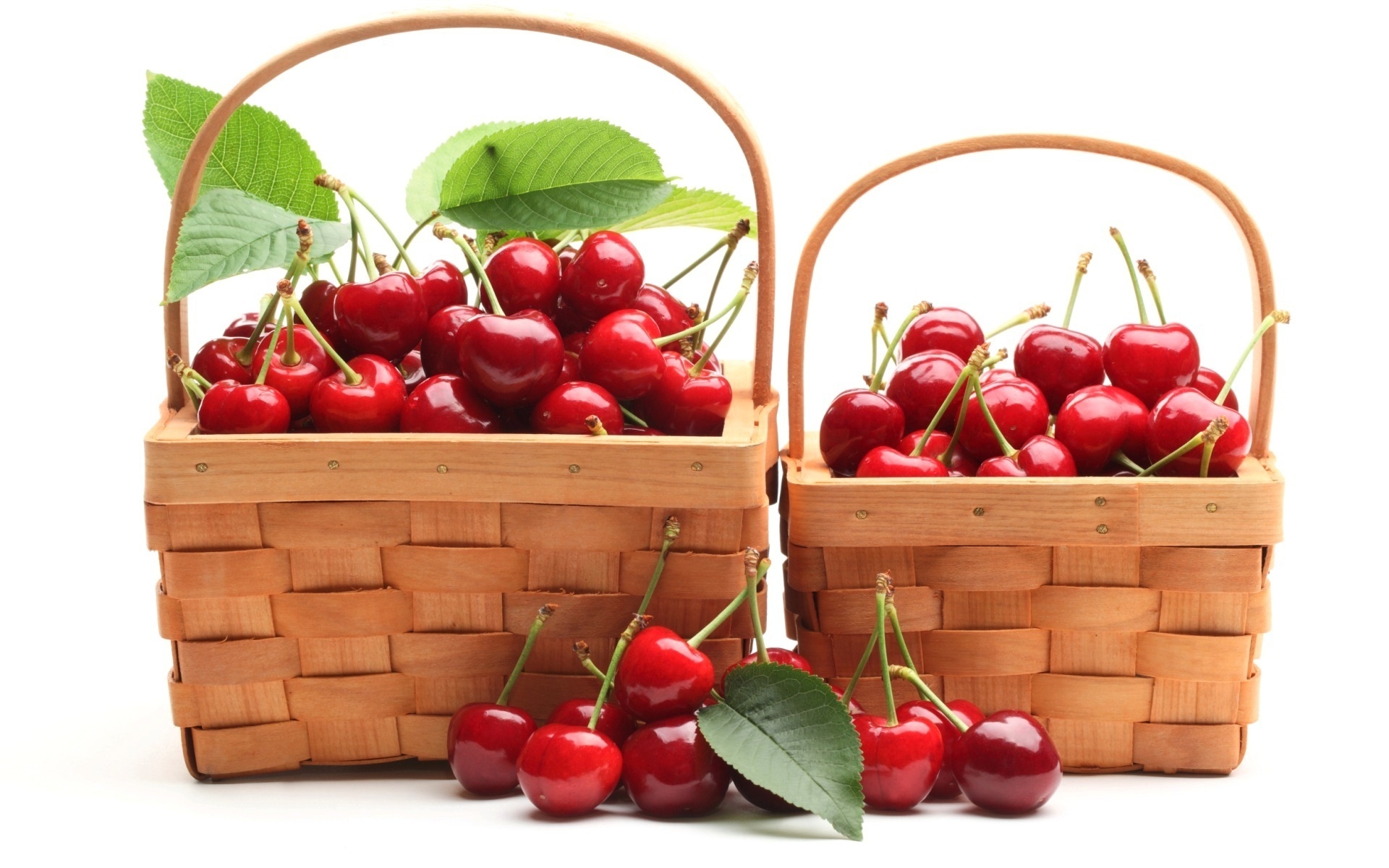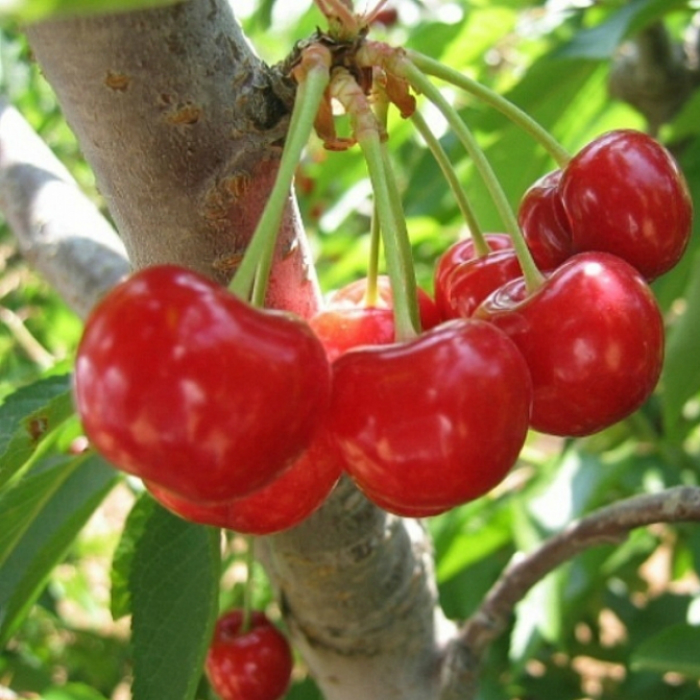Content:
Stone fruit trees are necessarily present in garden plots, but most often summer residents plant different varieties of cherries. The main thing that is required of them is a high yield of specific varieties, resistance to frost and diseases, as well as ease of planting and further care of seedlings. Cherry Lyubskaya is a Russian variety adapted for cultivation in many regions of Russia and meets all these requirements.
The history of the creation of the variety
Lyubskaya ordinary cherry is one of the varieties of cherries that have been grown in Russia for more than a decade. It is impossible to name the specific "authors" who bred this variety, but it is known that this particular cherry has been grown in many orchards for many years.
No wonder it is Lyubskaya cherry that is a folk variety. It was described at the beginning of the last century by professor-naturalist N.I.Kichunov, and Lyubskaya cherry was added to the State Register in the middle of the last century.
Description and main characteristics of Lyubskaya cherry
The crown of this fruit tree is sparse, spreading in shape. In height, this cherry grows no more than 2-2.5 m, so it is classified as a bushy plant.
The bark on the trunk is uneven, covered with cracks, its color is brown with a grayish tint. Branches branch off from the main trunk at an angle of 45⸰, are slightly curved and descend from top to bottom. The color of the bark on the shoots is brown, with a clearly visible bloom of silvery. The shape of the buds from which the branches grow is conical, rounded; in deciduous buds, the shape is oval.
The foliage is tough, shines in the sun. Its color is dark emerald, its shape is oval. Small denticles are located along the edge of the foliage, stipules may be located at the base.
The buds are collected in bunches of 3-5 pieces, the diameter of the blossoming flowers is about 2.5-3 cm. The shape of the petals is round, slightly corrugated, their color is white. Pollination of flowers occurs without the participation of bees - this cherry variety pollinates itself, therefore additional trees - pollinators for Lyubskaya cherry are not needed. Flowering occurs on last year's shoots (like most varieties of these stone fruit trees).
The variety is medium late in terms of ripening, the berries ripen in the last decade of July - the first decade of August. Ripening of berries takes place amicably, ripe fruits do not tend to crumble, grow in groups of several pieces.
Usually 3-4 seasons after planting of this varietal cherry, fruiting begins.
Characteristics of ripe berries:
- fruits are larger than average;
- berry weight - 4-5 g;
- ripe fruits - oval-round, deep red;
- taste - sweet with sourness;
- the bones are small, easily separated from the ripe pulp.
The yield of this variety is average, up to 12 kg of ripe berries are harvested from one fruit tree.
The harvested crop tolerates transportation well, the presentation of the berries does not deteriorate.
Growing and caring for a fruit tree
The seedling can be sold with a closed or open root system. In the first case, the tree acclimatizes faster in a new place, and is less sick.
To purchase a healthy seedling, you need to carefully study it:
- the root system of the seedling must be healthy, resilient, free of visible damage and fractures, free from signs of decay and growth;
- crown - correctly formed, branches of the skeleton - strong and strong;
- bark without cracks and visible traces of frostbite or sunburn.
Before planting, a hole should be dug 0.6 cm deep and about 0.8 m in diameter. The top layer is folded on one edge of the hole, the rest of the soil is folded on the other side. The top layer of soil is laid on the bottom with a low hill, on which the seedling is carefully placed.
The roots are gently spread along the slopes of the hill. Wilted shoots are carefully cut to living tissue (no more than a third of the branch length). The root collar should protrude 3-4 cm above the ground.
The depth of the planting pit for a stone fruit seedling should be 0.4 m deep and 0.8 m in diameter.
The topsoil is placed on one side of the pit, and the rest of the soil is placed on the other. Arable soil is laid with a mound on the bottom, a seedling is placed on the top of the hill, its root system is carefully spread along the slopes of the hill. If the branches of the seedling are wilted, they can be cut by 1/3 to a living tissue. The root collar should be above the ground, protruding 3-4 cm.
A hole is filled with a fertile substrate, tamped and watered - up to 1.5 buckets of water should be poured under each seedling. A stake is dug in next to the seedling, to which the seedling is tied.
For cherries, you need to choose the right "neighbors". It is best to plant other varieties of cherries or cherries nearby. But apple trees, pears, black currants or raspberry bushes are best planted away from Lyubskaya cherries.
The plot on which the cherry will grow should be on the south side. Groundwater should not approach the surface of the earth closer than 1 m. If the soil on the site is very acidic, lime or dolomite flour should be added to it.
Further care of seedlings after planting consists in regular watering, loosening the near-stem circle, mulching, feeding, autumn and spring pruning, shelter before the cold.
Types and features of harvesting
Since the berries ripen together and at the same time, the harvest is also harvested all at once. In this case, the berries can be protected from bird attacks. Another nuance - the cherry does not ripen after harvest, so you should not pick the fruits ahead of time.
The berries are usually picked in the afternoon when the morning dew has dried up.
If you intend to transport the crop over a long distance, it is better to collect the berries along with the cuttings - this way the crop will be stored longer.
Advantages and disadvantages of the variety
Gardeners who have been growing cherries of this variety for more than one year note their following positive qualities:
- this tree does not need pollinating insects, as well as the neighborhood of other fruit trees for better pollination - the cherry pollinates itself;
- the variety is medium late, therefore, budding and ripening of fruits occur at a time when the spring frosts have already passed;
- amicable ripening of the crop, stable yield from year to year. In the Moscow region and regions with a similar climate, about 22-24 kg of harvest is harvested from each cherry, and in the south of our country - over 32 kg;
- these fruit trees are compact, so it is easier to cut them and pick ripe berries;
- good presentation and good taste of ripe berries;
- the harvested crop perfectly tolerates long-distance transportation, which is a big plus for those summer residents who are engaged in the cultivation of this cherry for sale.
But Lyubskaya cherry also has disadvantages:
- berries are sour in taste, so they are practically not consumed fresh;
- trees are affected by fungal diseases;
- short lifespan of trees - up to 16 years in the central regions of Russia, in the southern regions the lifespan is extended to 22-24 years;
- low resistance to frost, so the variety did not take root in Siberia, the Urals and in regions with similar climatic conditions;
- trees can freeze and get burns from the rays of the sun.
Despite the disadvantages, it is this cherry variety that gardeners have grown for decades on their plots, because these trees give good yields every year, are undemanding to care.
